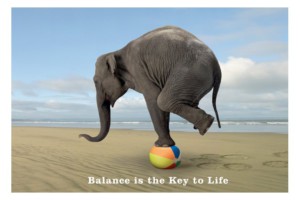
As millions marvel at the world’s top competitors performing athletic feats on cold, wet and slippery surfaces during this month’s 2018 Winter Olympics, Encinitas Physical Therapist Karen Turner-Schlegel sees an ideal educational opportunity for local athletes and fitness-minded people — There are two elements of fitness that often get overlooked: Balance and flexibility.
“When we work to prepare our bodies for a certain activity, or simply for the rigors of living an active lifestyle, we shouldn’t only be focusing on strength and cardio fitness,” said Karen. “It’s a good start, but if your balance and flexibility are below par, performance will be limited and the body will be more susceptible to injury.”
Few things highlight this more than winter sports and activities, such as those featured during the Winter Olympics. “Winter sports provide the ultimate challenge to balance and flexibility,” said Karen. “Both balance and flexibility work together to keep these athletes upright while they adapt to new terrain, changes in position, etc. The importance of this is obvious on snow and ice, of course, but the same concept applies in everyday life.”
Whether your personal goals include competing better athletically, getting outdoors more for hiking, cycling or (yes) skiing, or simply feeling safer and more confident playing in the backyard with the kids, good balance and flexibility are key, Karen added.
To help improve balance and flexibility in your life, Karen offers some simple recommendations:
Take an Exercise Class: Yoga, Pilates, step classes … they all strive to strengthen your core muscle groups, which are essential in achieving good balance. Plus, these classes often complement indoor cardio and resistance training – training that may do little to help with your balance.
Stretch Every Day: Take 10 to 15 minutes each day to stretch, either in the morning or just before bed. A stretch right before an activity will do little to help you out unless you’ve worked to establish a higher level of flexibility over the long term.
Perform Single-Leg Balance Exercises: Get your body accustomed to relying on one side at a time. Practice standing on one leg while tilting your body forward, back and sideways. Place your hand on a wall, countertop or piece of furniture if you need help balancing. Other single leg balance ideas include ball bounces, standing on a foam pad, and practicing with eyes closed … all in a safe setting, of course.
For a more individualized approach, physical therapists are specially trained to perform balance and flexibility assessments, which will pinpoint specific areas of strength and weakness. Such info, when combined with personal movement and fitness goals, can then be used to establish an individual fitness regimen that will specifically address any found weaknesses.

